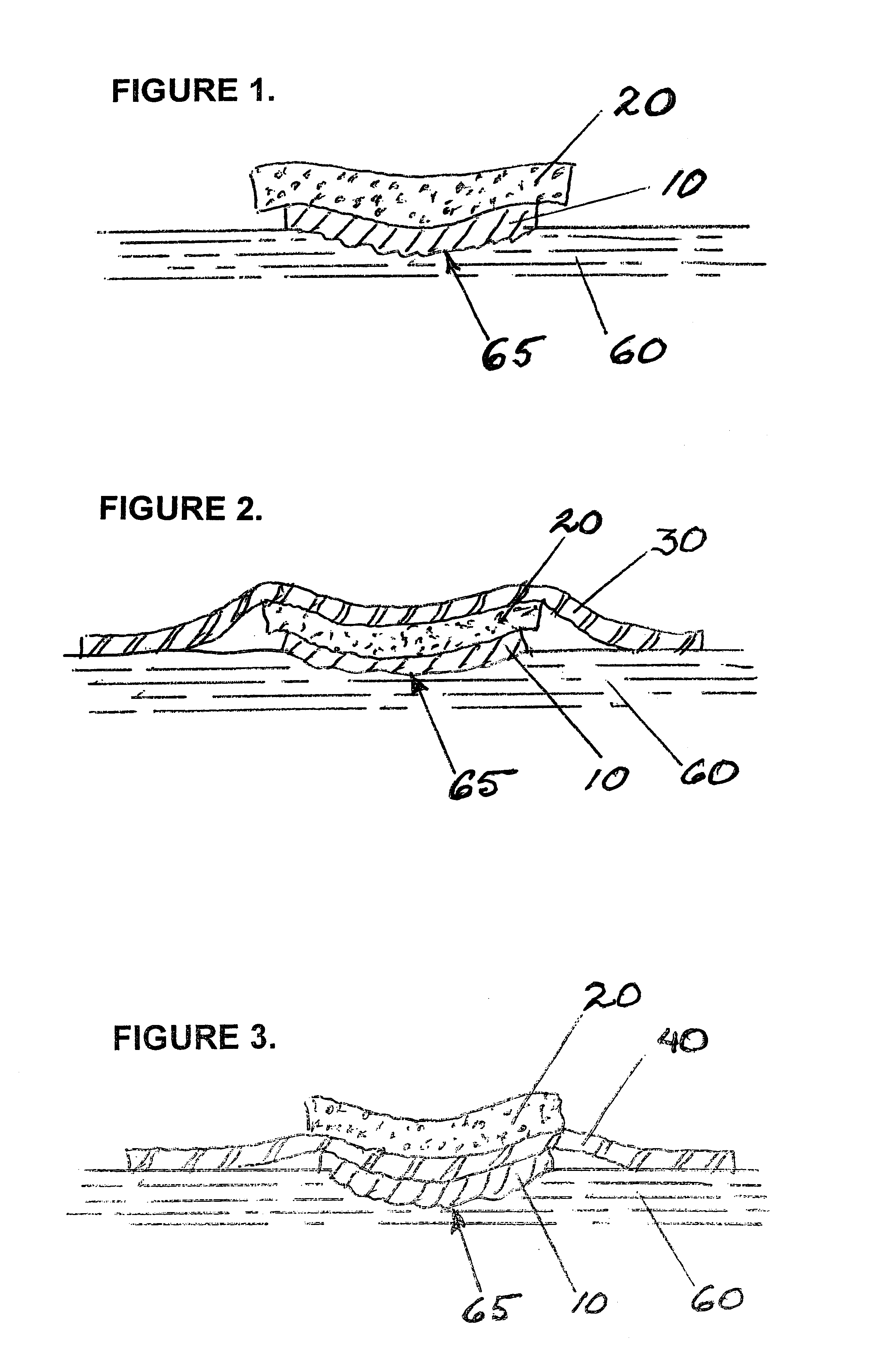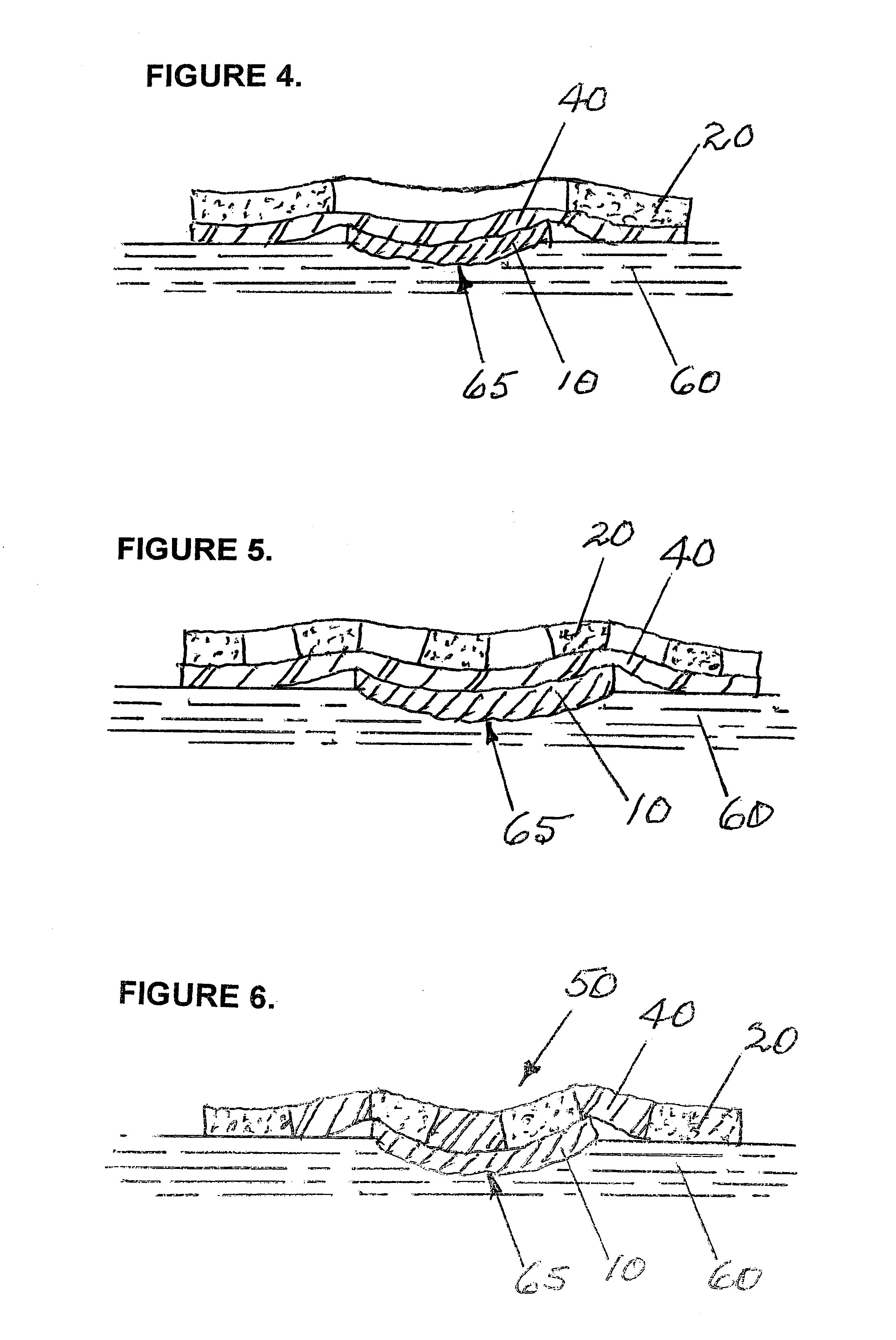Bioabsorbable wound dressing
a wound dressing and bioabsorbable technology, applied in the field of wound dressings, can solve the problems of inability to use, inability to treat chronic conditions, and inability to meet the needs of patients, so as to avoid trauma, facilitate wound healing, and facilitate use on any patient
- Summary
- Abstract
- Description
- Claims
- Application Information
AI Technical Summary
Benefits of technology
Problems solved by technology
Method used
Image
Examples
example 1
[0093]This example illustrates the production of a scaffold material of poly(lactic acid) fibers.
[0094]The porosity and degradation characteristics were measured for poly(lactic acid) (PLA) bonded carded web (BCW) liner (available from Kimberly-Clark Co., Neenah, Wis.) and for PLA surge material (a non-woven material having a high degree of void space to accommodate high liquid loads, provided by Kimberly-Clark Co., Neenah, Wis.), and a spunbond PLA (provided by Cargill Dow L.L.C., located in Minnetonka, Minn.). Based on porosity, integrity and availability, the PLA BCW liner was selected for further testing. FIG. 8 shows SEM photomicrographic images of this material at (a) 1,800×magnification and (b) at 1,000×magnification, and illustrates the open, non-woven structure of the PLA fibers. This material, as well as the other two, was more hydrolytically stable than would normally be desirable (does not degrade after almost 3 months in normal saline at room temperature), but it was be...
example 2
[0096]This illustrates the preparation of a scaffold material having PLA fibers coated with hyaluronate and chitosan niacinamide ascorbate.
[0097]Bicomponent fibers (1.5 denier) consisting of a PLA core and a less crystalline and more degradable PLA sheath were obtained from Fiber Innovations Technology, Johnson City, Tenn. These fibers were mixed with 3 denier monofilament PLA fibers in a 60:40 weight ratio and fabricated into 1.5 osy bonded carded web (BCW). Three rolls of the BCW were then laminated together by ultrasonic bonding using the Evolution pattern to form a 3-ply laminated BCW.
[0098]A laminated sheet of 3-ply BCW was cut into circular discs using a 2 ⅛″ arch punch. The discs were placed into 2 liters of distilled water with slow stirring for 24 hours to remove the finish applied to the fibers when they were fabricated. The discs were then air dried. An SEM photomicrographic image of the washed, laminated sheet is shown in FIG. 9(a).
[0099]Several washed and dried discs we...
PUM
| Property | Measurement | Unit |
|---|---|---|
| size | aaaaa | aaaaa |
| thickness | aaaaa | aaaaa |
| thickness | aaaaa | aaaaa |
Abstract
Description
Claims
Application Information
 Login to View More
Login to View More - R&D
- Intellectual Property
- Life Sciences
- Materials
- Tech Scout
- Unparalleled Data Quality
- Higher Quality Content
- 60% Fewer Hallucinations
Browse by: Latest US Patents, China's latest patents, Technical Efficacy Thesaurus, Application Domain, Technology Topic, Popular Technical Reports.
© 2025 PatSnap. All rights reserved.Legal|Privacy policy|Modern Slavery Act Transparency Statement|Sitemap|About US| Contact US: help@patsnap.com



